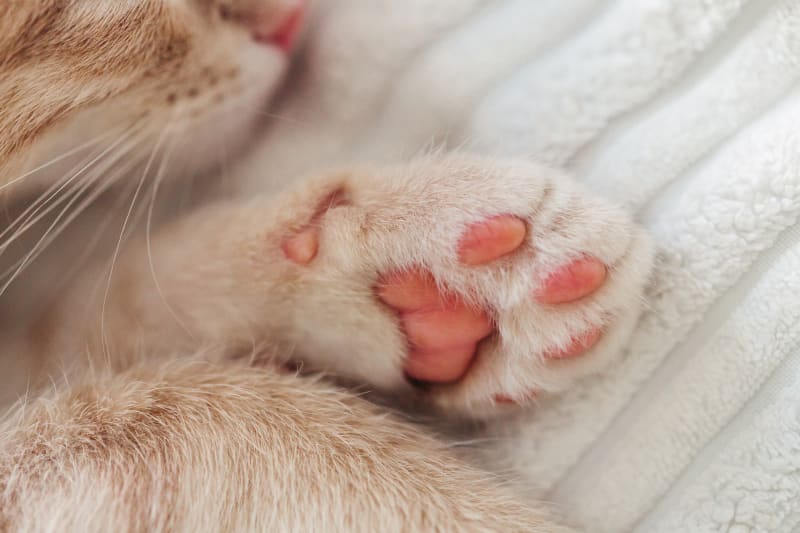Cats can start limping suddenly for various reasons, and as pet owners, it’s important to understand the common causes and what steps to take when we notice our feline friends experiencing this issue. In this article, we will explore the common causes of limping in cats and provide guidance on what to do if your cat is limping.
Limping in Cats
Limping in cats can be caused by a range of factors, including breaks, sprains, objects stuck in their paws, and ingrown claws. Regardless of the cause, it’s crucial to seek veterinary care to prevent infection and ensure their condition doesn’t worsen.
It may not always be easy to identify the source of your cat’s limp with a naked eye. However, something as simple as removing a thorn from their paw or trimming their claws could be the solution. It’s important to note that even if your cat doesn’t appear to be in pain (as they are adept at masking it), limping indicates discomfort. Therefore, always monitor their limp for signs of swelling, redness, or open wounds. If you notice any of these symptoms, contact your vet immediately.
Common Causes of Limping in Cats
Here are some common reasons why cats may start limping:
- Infected or torn nail
- Sprained or broken leg caused by trauma (e.g., falling or landing wrong)
- Bites from bugs or other animals
- Objects stuck in their paws
- Ingrown nails/claws
- Arthritis
- Walking on hot surfaces (stove, hot gravel, or pavement)
What Should I Do if My Cat is Limping?
When you notice your cat limping, it’s best to let them relax and calm down before assessing their leg. Once they have settled, carefully examine their paw and leg by running your fingers down the site, starting at their paw and working your way up. Look for any sensitive spots, redness, swelling, dangling limbs, or open wounds.
If you find a thorn, gently remove it with tweezers. If their nails are too long, you can trim them as usual or have the vet take care of it. If you’re unable to determine the cause of the limp and your cat continues to limp after 24 hours, schedule an appointment with your vet.
Determining whether your cat’s leg is broken can be challenging because the symptoms may resemble other injuries or a sprain (such as swelling, a limp, the leg being held in an odd position, or lack of appetite). Therefore, it is always advisable to consult your vet.
While waiting to see the vet, it’s essential to limit your cat’s movements to prevent further injury. Keep them in a room with low surfaces or in their carrier. Provide them with a comfortable place to sleep, such as a kitty bed, and keep them warm with their favorite blankets. Continuously monitor their situation.
When should I Take My Limping Cat to the Vet?
To prevent infection and obtain an official diagnosis, it’s best to take your cat to the vet for limping. If any of the following situations apply to your cat, schedule an appointment with your vet:
- They have been limping for more than 24 hours
- There is swelling
- An open wound is visible
- The limb is hanging in an odd position
- You can’t identify the cause of the limp
If you observe bleeding, swelling, or an abnormal limb position, don’t wait for 24 hours. Contact your vet immediately to prevent infection or worsening of the condition. It’s also important to reach out to your vet if you’re unsure about managing the situation. They will provide you with the necessary advice on the next steps to take.
Frequently Asked Questions
Q: Can my cat’s limp heal on its own?
A: Certain minor limps caused by surface wounds or small objects stuck in the paw may resolve without intervention. However, it’s always recommended to seek veterinary care to ensure proper assessment and prevent complications.
Q: How can I prevent my cat from limping?
A: While some causes of limping are unavoidable, such as trauma or arthritis, you can minimize the risk by keeping your cat in a safe environment, regularly trimming their nails, and providing them with a balanced diet to support joint health.
Q: Can overactivity cause my cat to limp?
A: Yes, overactivity or excessive jumping can lead to strains or sprains in your cat’s legs, resulting in limping. Ensure your cat has enough exercise and provide them with appropriate toys and climbing structures to avoid excessive strain on their limbs.
Conclusion
Limping in cats can occur suddenly and may be caused by various factors. As responsible pet owners, it’s our duty to care for our feline friends and seek veterinary assistance when necessary. By monitoring their limp, assessing their paw and leg, and seeking professional advice, we can ensure the well-being of our beloved cats. Remember, if in doubt, always contact your vet for guidance.
For more informative articles and expert guidance on pet care, visit Pawsoha.

